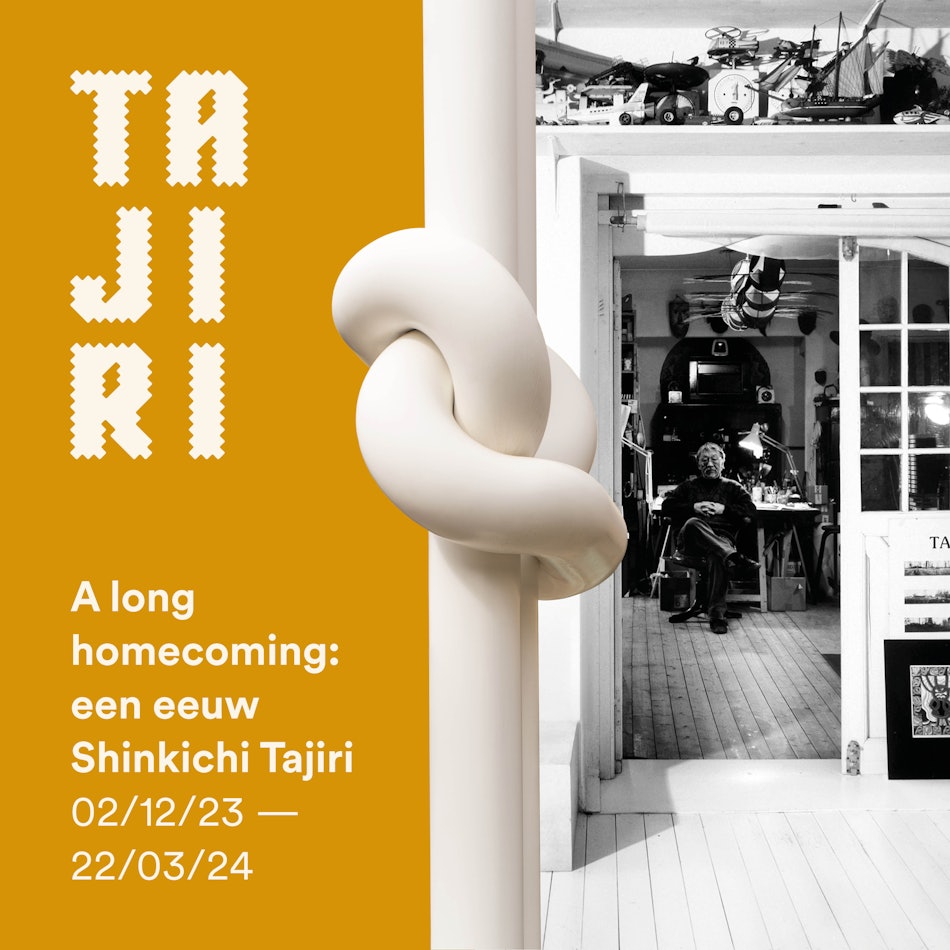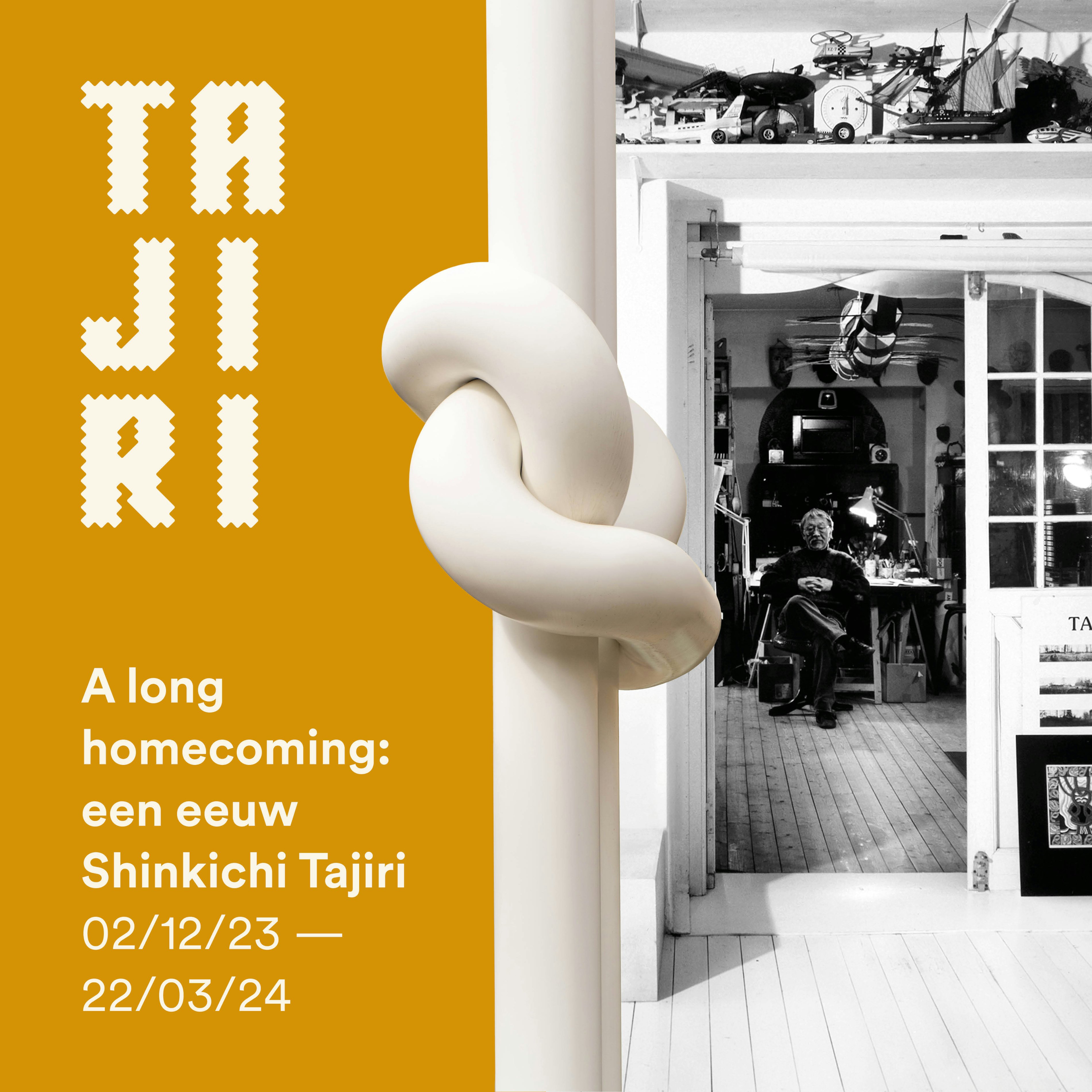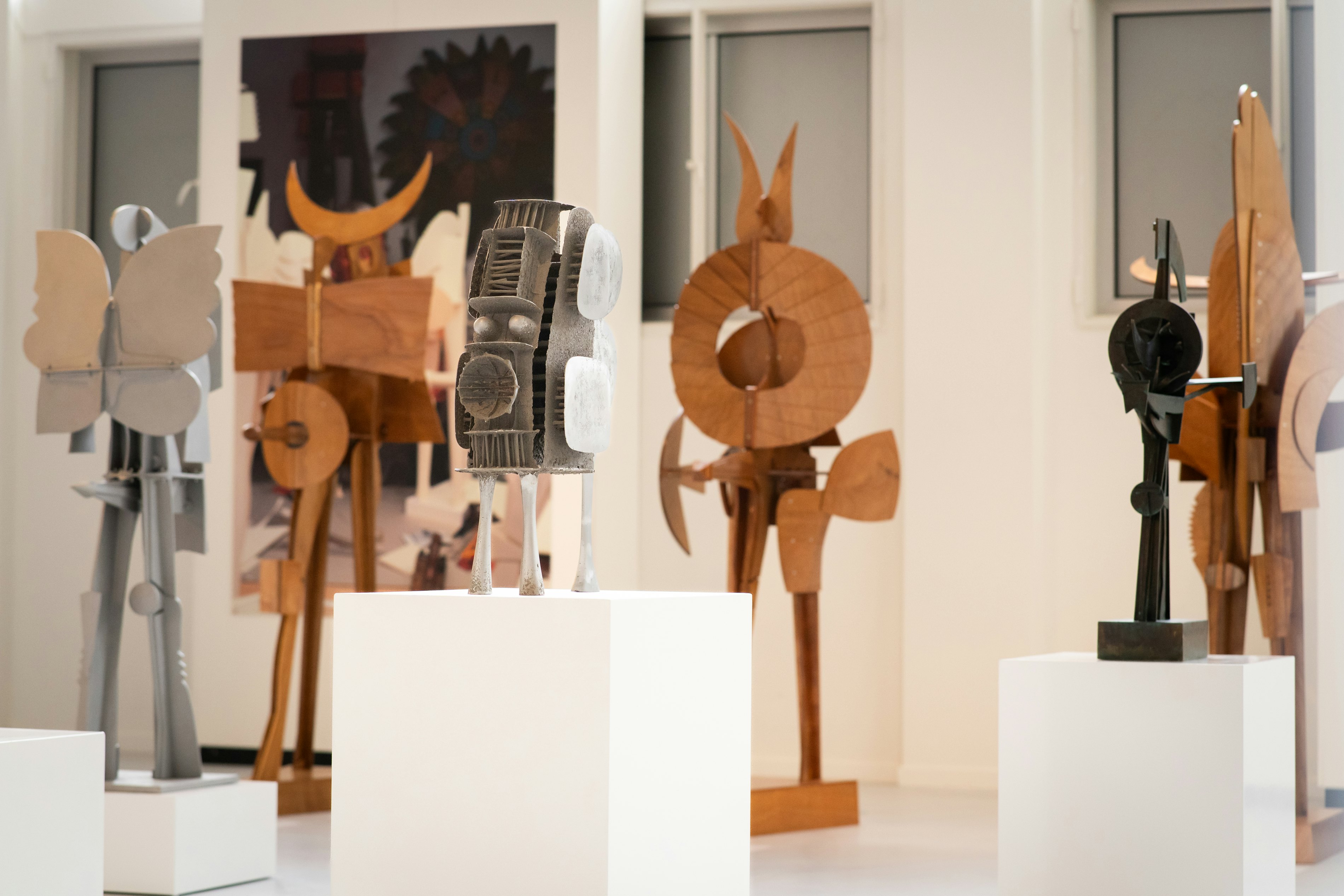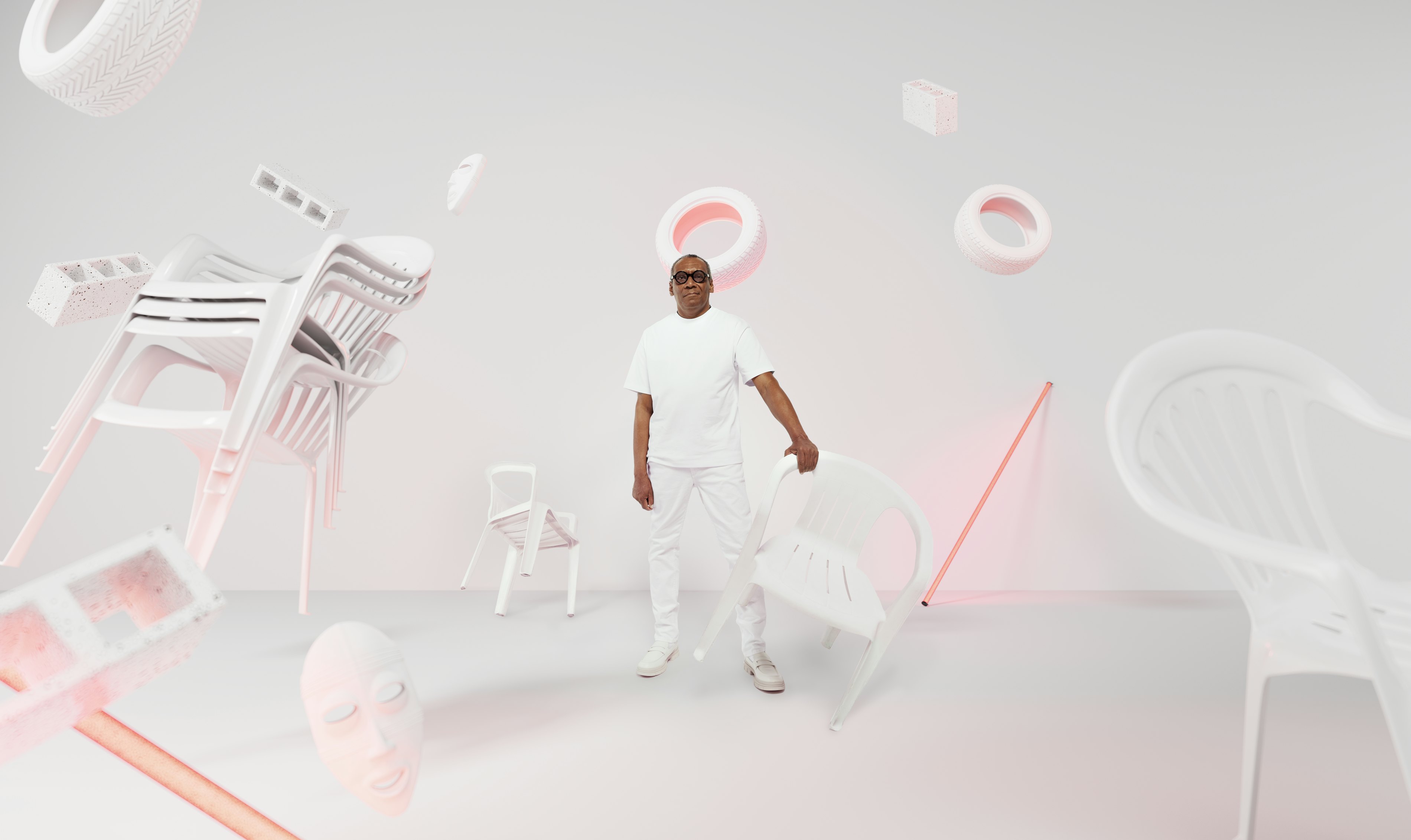

A long homecoming: the Shinkichi Tajiri centenary
A unique centenary exhibition of Tajiri's iconic work produced in North Limburg
After many years of wandering, Japanese-American artist Shinkichi Tajiri finally found his home in a North Limburg castle, Castle Scheres. In honour of his 100th birthday, from 2 December, museum van Bommel van Dam presents a unique centenary exhibition focusing on this important period of his life. A long homecoming: the Shinkichi Tajiri centenary gives an impression of life behind the castle walls and tells visitors more about the development of Tajiri’s famous warriors, knots, towers and machines. There are more than 50 sculptures, photos, graphics, drawings and films, some from the museum’s own collection and others on loan. The exhibition also includes work by the artist friends that Tajiri regularly welcomed to Baarlo, such as Karel Appel and Dorothy Iannone, as well as brightly coloured Hortisculptures by his partner, Ferdi, a fine artist. A revolutionary element of the exhibition is the use of the new, innovative AI museum app Navi Noa. This makes Van Bommel van Dam the first museum in the Netherlands with a personalised and interactive museum guide, powered by artificial intelligence.
Magical centre of art
Shinkichi Tajiri (Los Angeles, 7 December 1923 - Baarlo, 15 March 2009) and his family settled at Castle Scheres in Baarlo, North Limburg, in 1962. They embarked on a major renovation, transforming the dilapidated building into a magical centre of art. The castle formed the centre point for Tajiri and Ferdi’s boundless creative endeavours. It was a place they could work in peace and develop their art to its maximum potential. This location is where Tajiri developed his personal visual language, which allowed him to combine intensity and beauty. The artist also succinctly described his work by means of three core concepts: speed, erotica and violence. The exhibition A long homecoming: the Shinkichi Tajiri centenary charts the development of four iconic visual themes that came out of the studio at Castle Scheres: warriors, knots, towers and machines. Personal archive photographs provide an impression of the circumstances in which these works of art were created, as well as life behind the castle walls.
Shinkichi Tajiri sitting in his studio. © Egon Notermans


Homecoming
Before arriving in Baarlo, the artist had experienced many things. Tajiri was born in Watts, Los Angeles (US) to a Japanese immigrant family. On the day of his eighteenth birthday, Japan launched an attack on the American marine base Pearl Harbor in Hawaii. Three years later, Tajiri was fighting for the liberation of Europe, as part of a Japanese-American regiment. After the Second World War and a short period working in the United States, in 1948 the young sculptor moved to Paris, where he became involved with the international CoBrA Group. A few years later, Tajiri settled in the Netherlands with his family. First in Amsterdam and later in Baarlo. Castle Scheres turned out to be an ideal base for an artist who received commissions from all around the world over the course of his career. In 2007, when the four Sentinels on the Maasbrug bridge in Venlo were opened by the Netherlands’ reigning monarch at the time, Queen Beatrix, it was a moment of homecoming for the artist. Now his extraordinary career was recognised not only internationally but also close to home. This was also Tajiri’s last public space commission.
AI museum app
A revolutionary element in the exhibition is the use of the new, innovative AI museum app, Navi Noa. This app, powered by artificial intelligence, makes museum van Bommel van Dam the first museum in the Netherlands with a personalised AI museum guide to further enrich the visitor experience. The app provides users with answers to – almost – all the questions about Tajiri and the works presented that occur to them during a visit to the exhibition. As well as coming up with its own questions, Navi Noa makes suggestions to help users along the way. So every visit becomes an interactive journey discovering hidden stories. The museum app makes experience of art more engaging but also more accessible to a broader audience, stimulating more nuanced discussions about art. Language is no barrier either. For this exhibition, the app is available in Dutch, English, German, Farsi, Arabic and Ukrainian, and provides an explanation of any jargon and difficult words.
Talent development project
There is also a talent development project linked to the exhibition. Museum van Bommel van Dam challenged a group of local young people aged between 13 and 19 with a talent for drawing to look at the four most important themes in Tajiri’s art from their own perspective. Although the warriors, knots, towers and machines are universal in nature, they also reflect his multicultural background. All participants – ranging from a trio who met through the youthwork organisation Assist Jeugdwerk to a student of Crossmedia Design – were given one theme to delve into deeper in order to come up with a comic strip. The participants were mentored in this project by Coco Ouwerkerk (Colourbee). She is a professional cartoonist, best known for her online comic Acception, which has more than a million loyal readers. The results can be viewed from 2 December on the top floor of the museum, which is open to the public, and in the form of a comic book.
Shinkichi Tajiri: The Restless Wanderer
There is also an exhibition at the Bonnefanten Museum in Maastricht, Shinkichi Tajiri: The Restless Wanderer (02/12/23 - 12/05/24), to coincide with the exhibition at museum van Bommel van Dam. In this exhibition, Shinkichi Tajiri’s grandchildren, Tanéa and Shakuru Tajiri, honour their grandfather by shedding light on the versatile artist's oeuvre.























